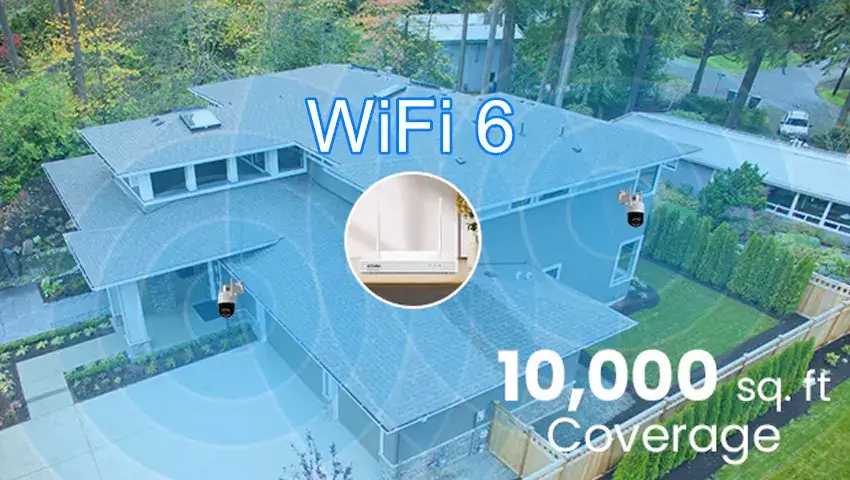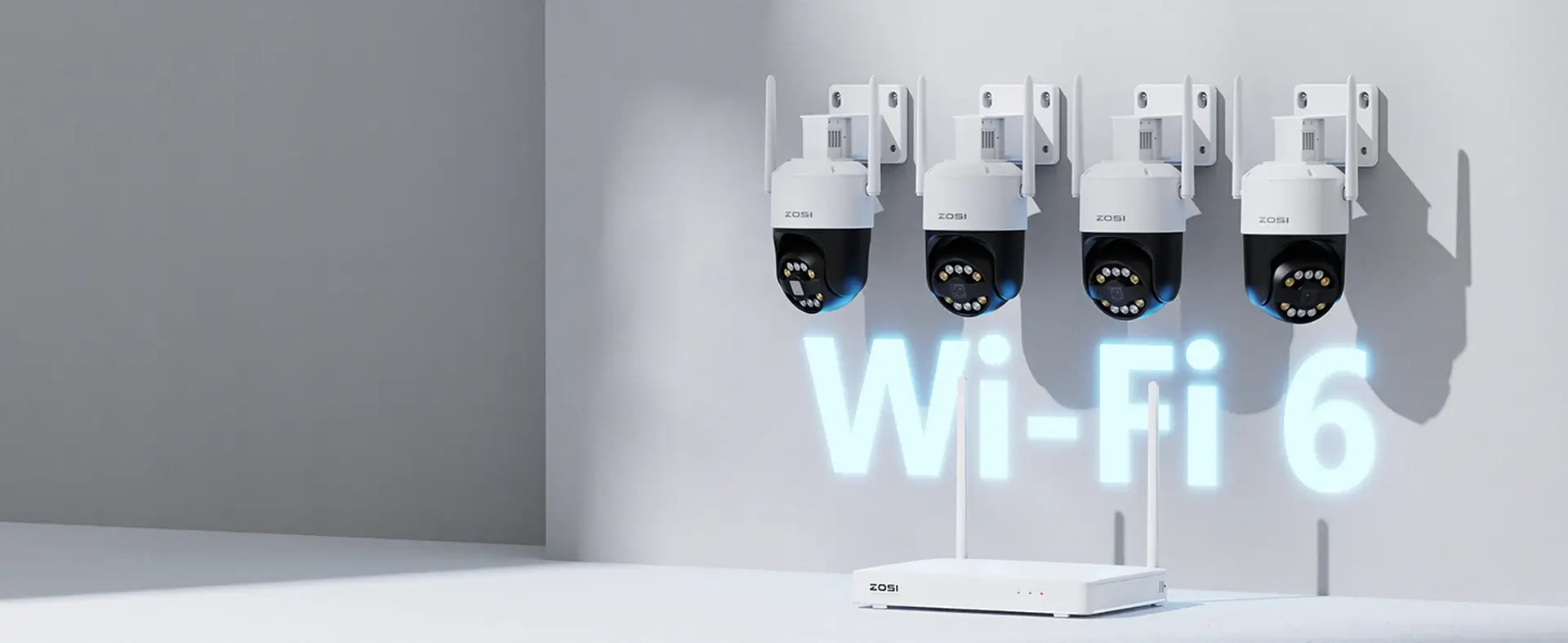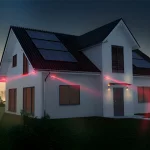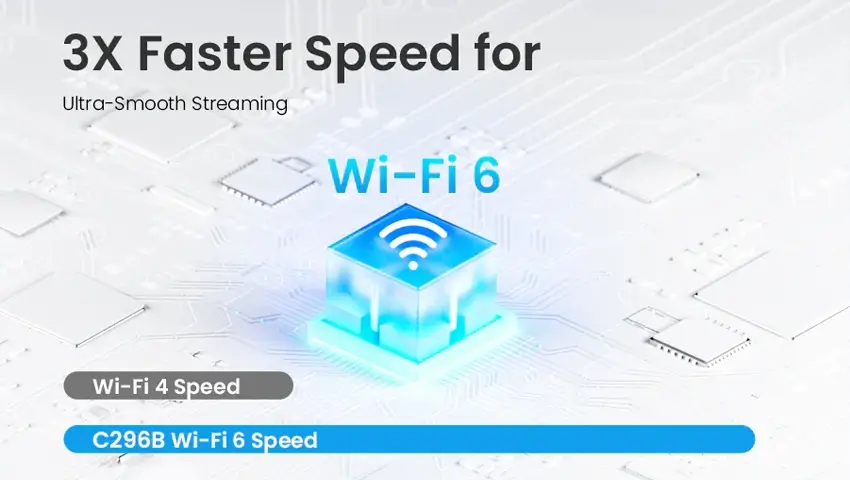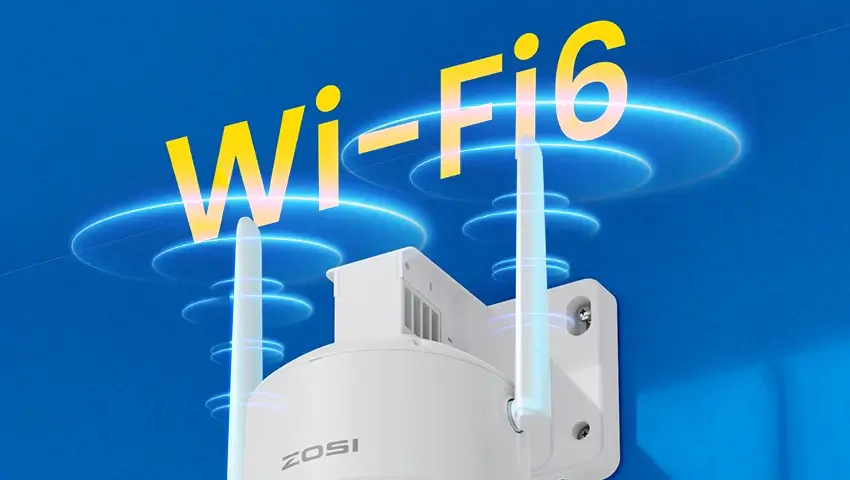WiFi is essential for accessing information, enjoying movies, and connecting with family and friends. However, wireless connections often weaken when signals pass through walls and other obstructions.
Enter WiFi 6, the latest wireless standard that promises improved wall penetration compared to its predecessors. But does WiFi 6 actually penetrate walls better? Let’s explore this question in detail.
Contents
What is Wi-Fi 6?
WiFi 6 is a new wireless standard designed to improve upon WiFi 5, offering stronger connections, faster speeds, and better energy efficiency. It operates on both the 5GHz and 2.4GHz bands, just like previous standards, but it stands out by using the 160MHz channel, which doubles the bandwidth of WiFi 5.
One of the key features of WiFi 6 is MU-MIMO (Multi-User, Multiple Input, Multiple Output), which allows multiple devices to connect to the same network simultaneously without significantly slowing down the speed.
1. How Does Wi-Fi 6 Work?
WiFi 6 uses radio waves to transmit data between devices. The setup typically includes a router connected to the internet and devices like smartphones or laptops connecting to the router wirelessly.
2. Benefits of the Wi-Fi 6
WiFi 6 offers several benefits that make it an attractive upgrade:
- Faster Speeds: WiFi 6 supports maximum theoretical speeds of up to 10Gbps, making it several times faster than WiFi 5.
- Better Range: Advanced technologies such as BSS Coloring and beamforming significantly improve the range and distance of WiFi 6, with a maximum coverage of up to 45 meters.
- Lower Latency: WiFi 6 reduces latency by about 75%, making it ideal for real-time applications like gaming and video conferencing.
- Improved Energy Efficiency: Technologies like Target Wake Time (TWT) help conserve energy and extend battery life in devices like tablets and smartphones.
Does Wi-Fi 6 Penetrate Walls Better?
WiFi 6 offers reliable and stronger internet connectivity, boasting advanced technologies that can improve signal penetration through walls. However, several factors can affect WiFi 6’s ability to penetrate walls effectively.
1. Factors affecting WiFi penetrating walls
- Wall Materials: The material of the wall significantly impacts signal strength. For instance, WiFi 6 signals lose more strength passing through brick walls compared to glass surfaces. However, WiFi 6 can efficiently penetrate drywall, gypsum, and wood.
- Obstacle Thickness: The thickness of the wall is another crucial factor. Thicker walls, such as concrete and brick, are harder for signals to penetrate, weakening the signal strength more than thinner walls like wood and drywall.
- Distance from the Router: The farther your device is from the router, the harder it is for WiFi 6 to maintain strong signal penetration. Minimizing the distance between your device and the router helps ensure faster and more consistent signals.
- Interference: Interference from other electronic devices can also affect signal strength. Electromagnetic waves from these devices, especially in crowded areas with multiple WiFi networks, can reduce signal efficiency.
How to Improve WiFi 6 Coverage Through Walls?
You might still wonder, “Does WiFi 6 have better range?” To extend WiFi 6 coverage and improve its ability to penetrate walls, consider these effective tips:
1. Move the Router to a Central Location:
Router placement is crucial for optimal coverage. Position the router in a central location near your devices to maintain consistent and stable signal strength.
2. Upgrade Devices and Router:
Using outdated devices or routers that don’t support the latest WiFi standards can negatively impact performance. Upgrading to newer devices and a WiFi 6-compatible router ensures better wall penetration and overall network performance.
3. Use a WiFi Extender:
A WiFi extender rebroadcasts and amplifies your router’s signal, extending its range. Place the extender in areas where the WiFi signal is weak to boost signal strength throughout your space.
Does 5GHz Go Through Walls?
Can 5GHz WiFi go through walls? Yes, it can, but its range and wall penetration are generally less effective compared to 2.4GHz WiFi. The 5GHz signals have a shorter wavelength, making them more susceptible to attenuation and interference from physical barriers like walls and floors. However, the higher frequency of 5GHz allows for faster data speeds.
Wi-Fi 5 vs Wi-Fi 6 vs Wi-Fi 7: What’s the Difference?
The introduction of the WiFi 7 network standard invites comparisons among WiFi 5, WiFi 6, and WiFi 7. Here’s a detailed look at the differences:
1. What is Wi-Fi 5?
WiFi 5, also known as IEEE 802.11ac, is the fifth-generation WiFi standard. It offers enhanced performance over its predecessors and is widely used in modern devices.
2. What is Wi-Fi 7?
WiFi 7, set to be released in 2024, will be the seventh WiFi standard. It promises to deliver incredibly fast wireless connections with a theoretical maximum data output of 46 Gbps.
Comparison Overview
For a clear understanding of the differences between WiFi 5, WiFi 6, and WiFi 7, refer to the table below:
Wi-Fi 6 Security Cameras With Strong Signal Recommendation
Finding high-quality WiFi security cameras with strong signal strength can be challenging. Below, we highlight a popular option that stands out.
Zosi C296 WiFi 6 Kits
The Zosi C296 WiFi 6 Kit is a 5MP PTZ (Pan-Tilt-Zoom) security camera equipped with dual-band WiFi 6 technology. This advanced setup ensures seamless streaming of high-resolution 5MP footage, enhances stability, and reduces latency. Even in busy network environments, the Zosi C296 provides a smooth and responsive viewing experience.
5MP Wi-Fi 6 Security Camera System - C296 Wireless Kits
- 5MP Super Sharpness
- Brilliant Nighttime Surveillance
- Al Person Detect and Track
- Person Vehicle Detection
- Spotlight & Sound Siren
- Two-way Audio
- Present Points
- Customized Alerts
- Detection Zone
- HDD Storage
FAQs
1. Does WiFi Go Through Walls?
Yes, WiFi signals can penetrate walls, but the effectiveness varies depending on the frequency and the type of wall. Lower frequency signals, like those from a 2.4GHz WiFi network, penetrate walls more easily and have a longer range. Higher frequency signals, such as those from a 5GHz WiFi network, offer faster speeds but are less effective at penetrating walls and other obstacles.
2. Does Wi-Fi 6 penetrate walls better than Wi-Fi 5?
Yes, WiFi 6 penetrates walls better than WiFi 5, thanks to its higher range and advanced technologies. With WiFi 6, the signal is less likely to be affected by interference, providing a more reliable connection.
3. Can 5G Wi-Fi penetrate walls?
While 5GHz WiFi can go through walls, its signals are more likely to be blocked or weakened by obstacles like ceilings, floors, and walls. Therefore, its wall-penetrating ability is less reliable than other frequencies.
4. Does Wi-Fi 6 reach further?
One of the significant advantages of WiFi 6 is its ability to cover longer distances. WiFi 6 can reach up to 45 meters, making it a reliable choice for large areas and better connectivity.
Conclusion
If you’re wondering, “Does WiFi 6 penetrate walls better?” this guide provides a comprehensive answer. We’ve detailed the factors affecting WiFi 6’s wall-penetration capabilities and recommended a reliable WiFi 6 security camera with a strong signal. The Zosi C296 WiFi 6 Kit ensures you won’t face any problems while monitoring your home, thanks to its advanced features and robust performance.
